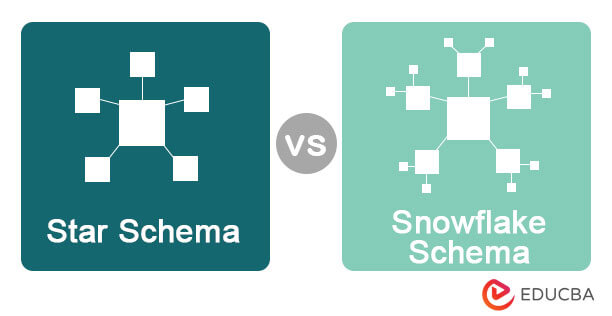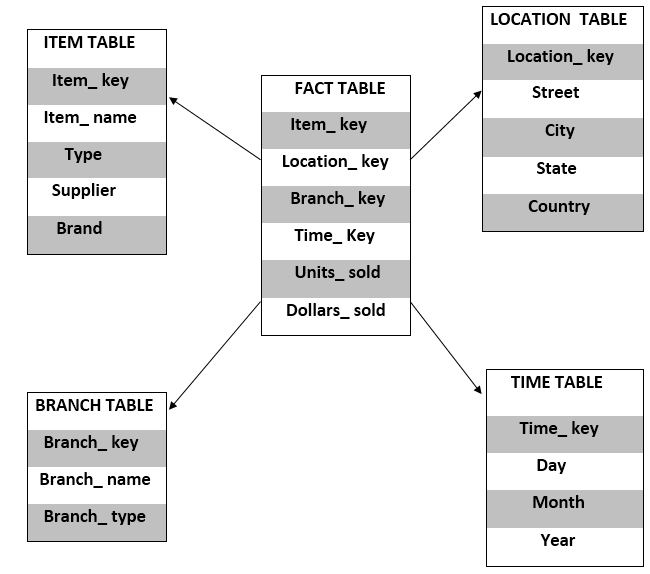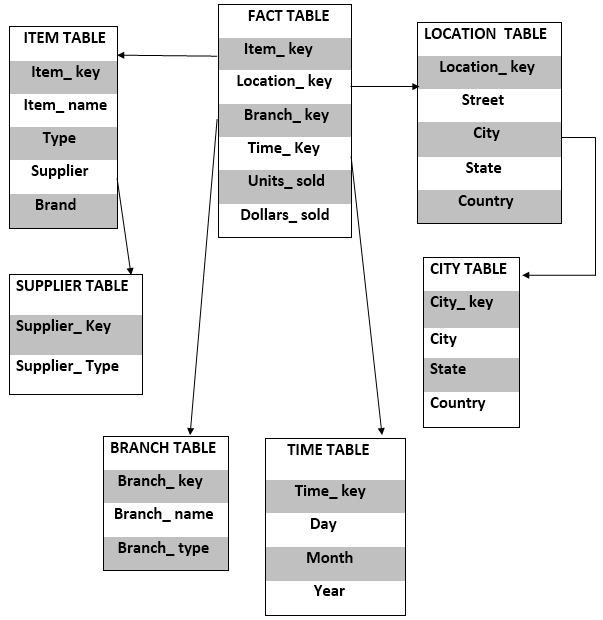Updated March 20, 2023
Difference between Star Schema and Snowflake Schema
The following article outlines the differences between Star Schema vs Snowflake Schema.
Star Schema and Snowflake Schema are two common techniques for data modeling in data warehousing. The Star Schema has a central fact table and a set of dimension tables that are directly connected to it, forming a star-shaped structure. In contrast, the Snowflake Schema expands on the Star Schema by normalizing the dimension tables, creating a more complex snowflake-shaped structure. One of the potential drawbacks of Star Schema is that it can result in redundant and inconsistent data due to its denormalized structure. On the other hand, Snowflake Schema’s normalized structure can improve data consistency by reducing redundancy.
What is Star Schema?
Star Schema is a star-structured simple data warehousing schema. The fact table is at the center, and dimension tables are connected to it through foreign keys, with each dimension table containing a set of attributes. Unlike other schemas, each dimension is represented by a single-dimension table, and these tables are not joined with each other. In this schema, every dimension is represented with a single dimension table only, but the dimension tables are not joined with each other. Star Schema’s advantages include slicing down, easy data analysis, optimal disk usage, and performance increase. Here is an example for better understanding:
Example:
Consider a refrigerator manufacturing company and create a schema for the sales of the company. Sales will have the following dimensions:
- Item
- Location
- Branch
- Time
The schema has a fact table at the center for sales, which would contain keys to associate with each dimension, having two measures, i.e., units sold and dollars sold.
What is Snowflake Schema?
Snowflake Schema is an extension of the Star Schema in data warehousing. It expands on the Star Schema by normalizing the dimension tables, resulting in a more complex structure that resembles a snowflake. In Snowflake Schema, the dimension tables are split into additional tables to reduce redundancy and optimize memory usage. This creates a hierarchical form of dimensional tables, with each sub-dimension table associated with primary and foreign keys in the fact table. The advantages of Snowflake Schema include easier implementation and disk space efficiency. However, having multiple lookup tables can increase maintenance requirements.
Example:
Considering the same above example of the refrigerator manufacturing company, in the Snowflake Schema, the fact table is the same as in the Star Schema, but the major difference is in the definition or layout of dimension tables.
In this schema, the single dimension table of the item has been normalized and split, resulting in the creation of a new supplier table that includes information on the type of supplier. Likewise, the dimension table of location has been normalized, and its data has been split into a new city table that contains details of each specific city.
Star Schema vs Snowflake Schema: Head-to-Head Comparison (Infographics)
Below are the top 9 differences between Star Schema vs Snowflake Schema:
Star Schema vs Snowflake Schema: Key Differences
Here are some major differences between Star Schema vs Snowflake Schema:
Star Schema:
- In a Star Schema, data analysts store hierarchies of dimension in a dimension table.
- It contains a central fact table encircled by a dimension table.
- In this, a single join associates the fact table with a dimension table.
- It has a simple design.
- The data structure is denormalized.
- The query executes at a faster rate.
- In this cube, the processing is faster.
- It has more redundant data.
- It uses simple queries.
- Star Schema is easy to understand.
- Higher consumption of space
Snowflake Schema:
- In a Snowflake Schema, data analysts store hierarchies in separate tables.
- Snowflake Schema includes a fact table surrounded by dimension tables, which are in turn surrounded by further dimension tables.
- In this schema, many joins are necessary for fetching the data.
- It has a complex design.
- The data structure is normalized.
- The query executes comparatively slower than the Star Schema.
- In the Snowflake Schema, cube processing is slower.
- It contains less redundant data.
- It uses complex queries.
- The Snowflake Schema is comparatively more difficult to understand than the Star Schema.
- Less space usage in the Snowflake Schema.
Star Schema vs Snowflake Schema: Comparison Table
The following are the comparisons between Star Schema vs Snowflake Schema:
| Characteristic |
Star Schema |
Snowflake Schema |
| Maintenance/Change | It has more redundant data, and hence it is more difficult to change or maintain. | This schema is easier to change and maintain due to less redundancy. |
| Understandability | The complexity of the query is less and hence easy to understand. | Queries applied are more complex and hence difficult to understand. |
| Query Execution Time | It has fewer foreign keys, and hence the query execution is faster and takes lesser time. | Due to more foreign keys, the query execution time is more, or the query executes slowly. |
| Type of Data Warehouse | Better for datamarts having single relationship, i.e. one to one, or one to many | Better for complex relationships, i.e. many to many relationships |
| Number of Joins | It has more number of joins | It has less number of joins |
| Dimension Table | It has only one dimension table for each dimension. | It has one or more dimension tables for a single dimension. |
| Usability | Preference to the star schema when the dimension table has a smaller size, i.e., fewer rows. | Good to use when the size of the dimension table is bigger. |
| Normalization and Denormalization | Both the fact table and dimension tables are denormalized. | A fact table is denormalized, while dimension table is normalized. |
| Data Model | It follows a top-down approach. | It follows a bottom-up approach. |
Conclusion
Both the Star Schema and the Snowflake Schema represent data warehouses. They share similarities and differences. The Snowflake Schema is an extension of the Star Schema and is the primary preference when data is more abundant because it reduces redundancy. However, the Star Schema is still more popular than the Snowflake Schema
Recommended Articles
Here are some further articles:






